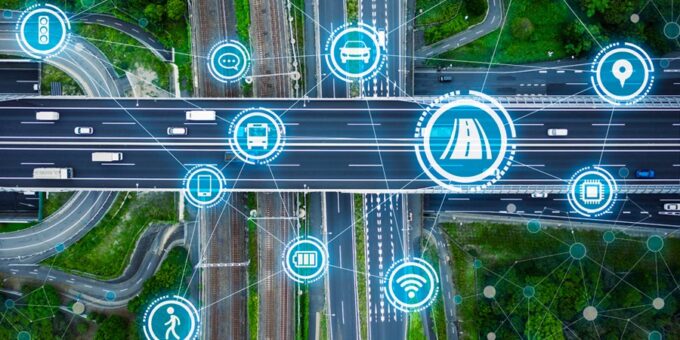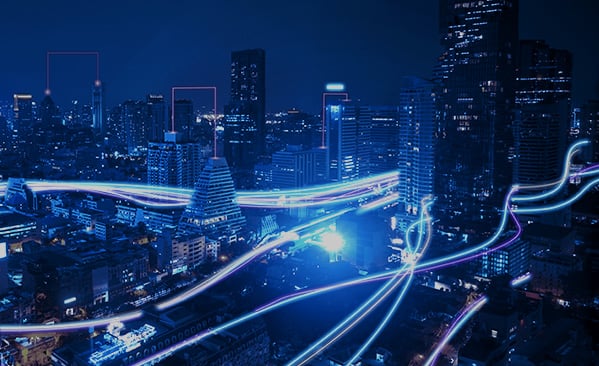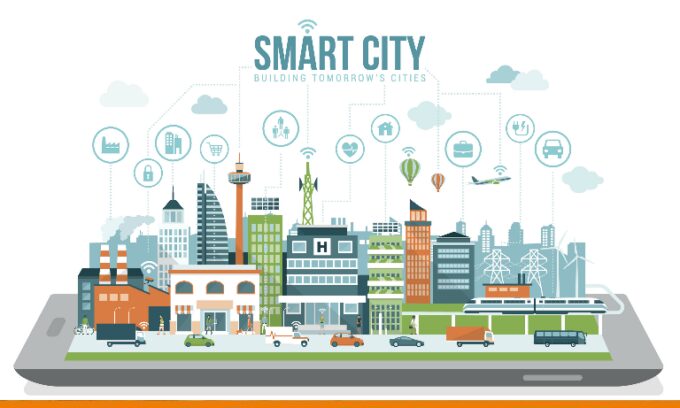As urban populations continue growing rapidly, cities are facing increasing pressure to become more efficient, sustainable, and optimized in how they operate and utilize resources. And many are turning to advanced Internet of Things (IoT) technologies to help make that “smart city” vision a reality.
Blanketing cities with networks of connected sensors and devices streaming real-time data means city leaders can gain powerful insights to understand and manage their infrastructure and services like never before. That intelligence helps drive more proactive decision-making, automated processes, seamless connectivity, and enhanced experiences for residents and visitors alike.
Smarter Transportation Systems

Source: telecomreviewafrica.com
Dealing with traffic congestion is a constant battle in densely populated urban areas. But by embedding IoT sensors across road networks, intersections, parking garages, and even individual vehicles themselves, cities gain unprecedented visibility into traffic flows and patterns.
Data insights from all these connected sensors allow transportation agencies to dynamically optimize timing of stoplights, meter highway on-ramps, implement variable tolling price signals, and proactively reroute travelers based on real-time conditions. Notifications about roadwork, accidents, and alternate routes can be pushed to drivers as well.
For public transit users, smart tracking of buses, subways, and trains combined with mobile apps makes trip planning, payments, and transfers seamless. On-board sensors monitor vehicle health and operations, too, enabling predictive maintenance to prevent disruptive breakdowns.
The IoT ecosystem creates a smooth, hyper-connected transportation grid instead of siloed systems operating reactively based on fragmented information. Cities reduce gridlock while improving travel times, accessibility, cost-effectiveness, and environmental sustainability through better public transit participation.
Some cities are even unleashing autonomous shuttles or vehicles using IoT connectivity to offer compelling mobility-as-a-service alternatives to traditional transportation modes. It’s not science fiction anymore but real transportation innovation in action fueled by IoT.
Efficient Utility Management
Did you know leaks in water distribution systems lose hundreds of billions of gallons annually across the U.S.? Or that nearly a third of generated electricity is wasted along transmission and distribution lines? IoT could be the secret to slashing those inefficiencies for utilities.
Embedding millions of smart sensor nodes across their systems allows utility providers to proactively detect leaks, measure water/electricity flows, manage demand, and monitor infrastructure integrity in real-time.
The people at Blues Wireless say that LoRa IoT devices help utilities cover large areas reliably at low costs with low-power, wide-area IoT connectivity. Uninterrupted data on factors like pipe pressure, water quality, valve openings and voltages flows back to alert systems.
Analytics tools then analyze the flood of IoT sensor data to establish normal baselines, identify anomalies needing attention, and predict issues before catastrophic failures like water main breaks or substation overloads. Automated alerts and service requests get triggered as needed.
This constant IoT monitoring and predictive intelligence helps utilities reduce waste, prevent outages, optimize equipment efficiency, identify trouble spots for proactive maintenance, and safely extend asset lifecycles without surprise capital outlays.
Streamlined City Operations

Source: ceragon.com
Beyond transportation and utilities, IoT is streamlining all sorts of civic operations and services that impact residents’ daily lives and municipal budgets.
With smart streetlamps that automatically brighten when motion sensors detect pedestrians or vehicles and dim during inactivity periods, cities can substantially reduce energy costs while improving visibility and safety. IoT sensors in public trash cans signal when they need emptying, optimizing collection routes and workloads.
Park facilities monitor visitor flow, irrigation systems and playing field conditions through connected devices to manage resources better and deliver smoother recreational experiences. Parking meters and space availability sensors guide drivers directly to open spots while also tracking usage to set appropriate pricing and supply levels.
City crews even track the condition of roads and sidewalks through embedded IoT vibration sensors in their vehicles. Real-time pothole, crack, and deterioration data automatically creates prioritized repair schedules and dispatches while providing an ongoing system health scorecard.
Perhaps most importantly, IoT networks connect first responders with enhanced emergency situational awareness, communication capabilities, and resource tracking for improved public safety and crisis response.
When every municipal asset from trash cans to light poles to streets themselves can become a connected IoT data stream flowing into centralized management systems and predictive models, the potential efficiency gains for city operations and services are massive. And with higher visibility into citywide physical environments, data-driven planning and infrastructure management become far more precise and proactive.
Engaged Smart City Living

Source: linkedin.com
Beyond just optimizing internal operations through IoT, cities are also leveraging the technology to foster more interactive experiences and services that enhance residents’ quality of life.
Connected kiosks or informational beacons in public spaces deliver location-aware updates on transit schedules, city events, attraction info and local promotions based on proximity data. Some project large, mapped navigation routes on the ground for pedestrians to follow.
Environmental sensor networks track air quality, noise levels, weather, and other conditions to push alerts to citizens when elevated risks or advisories exist in their area. Mobile apps consolidate and correlate all this IoT sensor information so locals can check real-time updates for any neighborhood.
Buildings and attractions like museums get smarter through augmented reality exhibits, smartphone wayfinding, interactive digital signage, and analytics pinpointing visitor interests and traffic patterns. Connected parking spots are easily located and paid for through mobile apps without the hassle of meter feeding.
The goal is to create living environments immersed in connectivity, automation, and 24/7 data intelligence citizens can tap into for more convenience, efficiency, and enriching experiences. Instead of faceless urban infrastructure, the smart city fosters digitally engaged communities.
It’s the early stages of cities evolving as unified, orchestrated systems leveraging pervasive IoT and data exchange to transform how we live, work, and interact in modern society.
Conclusion
As smart city investments and deployments grow, the ability to capture cross-departmental insights and compound value across interconnected IoT systems should help accelerate returns and spur continued innovation. Like with any transformational technological shift, early champions and successes will help light the path forward.
The future is already unfolding for engaged citizens in seamlessly connected cities using the power of IoT data to run more intelligently. It’s looking smarter every day.



